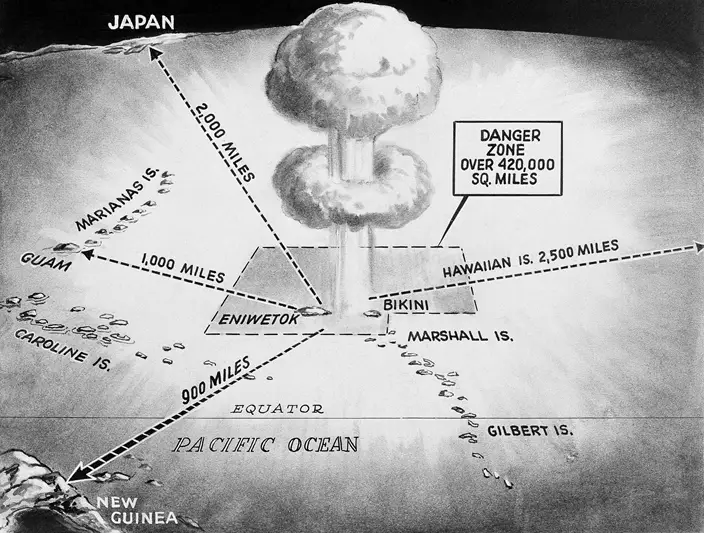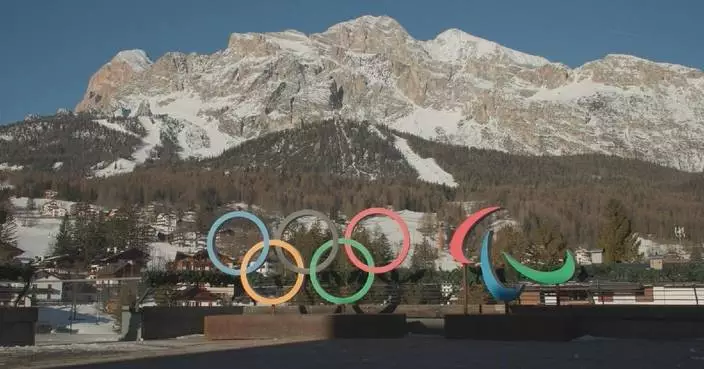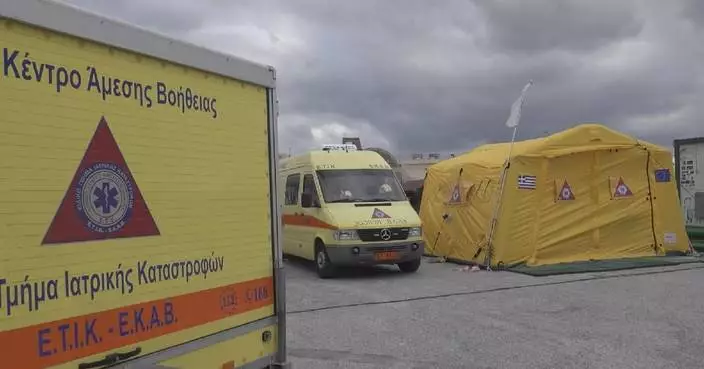North Korea says it successfully detonated a hydrogen bomb in its latest nuclear test Sunday. Outside experts haven't been able to verify that claim, but say it's plausible. If true, it would represent a major step forward in North Korea's effort to develop a nuclear weapon capable of reaching the United States.

FILE - This April 27, 1956, file photo shows the area in which the United States hydrogen bomb tests will take place in the Pacific Ocean. North Korea said it successfully detonated a hydrogen bomb in its latest nuclear test Sunday, Sept. 3, 2017. (AP Photo/Ed Gunder, File)
MORE POWERFUL THAN AN A-BOMB
A hydrogen bomb can be far more powerful than the atomic bombs the U.S. dropped on Japan in World War II. The U.S. conducted the first successful tests of hydrogen bombs in the 1950s. Their yields of 10,000 kilotons and more were several hundred times larger than the bombs that leveled Hiroshima and Nagasaki. Experts believe the yield of North Korea's latest test was at least 140 kilotons, which would make it some seven to eight times as powerful as Hiroshima (15 kilotons) and Nagasaki (about 20).

FILE - This 1960 image released by the U.S. Department of Defense shows the Little Boy atomic bomb, the type detonated over Hiroshima on Aug. 6, 1945. The atomic bombs that hit Japan were huge and had to be dropped from planes flying overhead. (AP Photo/File)
USES THE POWER OF THE SUN
Atomic bombs rely on fission, or the splitting of the nucleus of an atom, just as nuclear power plants do. The hydrogen bomb uses both fission and fusion — the fusing together of atomic nuclei — to produce more explosive energy. It's the same process that keeps the sun and other stars burning. H-bombs are also known as thermonuclear bombs, because of the extremely high temperature needed to induce fusion. A typical hydrogen bomb is two-stage: First, an atomic fission bomb detonates, and that in turn starts the fusion of a hydrogen isotope in a second section.

FILE - In this Sept. 3, 2017 file photo, people react to the news of their country's latest nuclear test, at the Mirae Scientists Street in Pyongyang, North Korea. (AP Photo/Kim Kwang Hyon, File)
SMALL ENOUGH TO FIT ON A MISSILE
The atomic bombs that hit Japan were huge and had to be dropped from planes flying overhead. With its higher power, a hydrogen bomb can be made small enough to fit on the head of an intercontinental missile. The hydrogen bomb is the standard for the five nations with the greatest nuclear weapons capability: Russia, the U.S., France, China and the U.K. Other nations may either have it or be working on it, despite a worldwide effort to contain such proliferation.












































